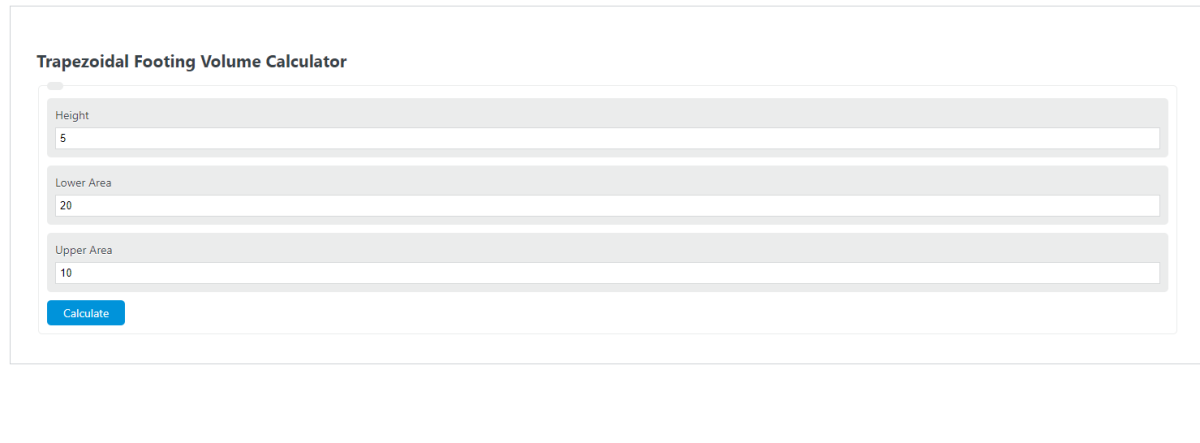Enter the area of the lower and upper portions of the footing and the height of the trapezoid into the calculator to determine the volume.
- All Volume Calculators
- Triangular Pond Volume Calculator
- Soil Stockpile Volume Calculator
- Column Volume Calculator
- Oil Formation Volume Factor Calculator
Trapezoidal Footing Volume Formula
The following equation is used to calculate the Trapezoidal Footing Volume.
V = H/3*(A1+A2+(SQRT(A1*A2))
- Where V is the Trapezoidal Footing Volume
- H is the height
- A1 is the area of the lower portion
- A2 is the area of the upper portion
What is Trapezoidal Footing Volume?
Definition:
Trapezoidal footing is mainly used for foundations of buildings or other structures. In almost all cases, the soil under the building must be capable of supporting the building and its contents when it is in place. This can only be accomplished if the soil is strong enough to sustain the weight.
Trapezoidal Footing helps to increase the strength of soil under a building, so that it can bear more load without going into compression. It also helps in draining out water that enters the foundation through cracks and holes in the walls and flooring, thereby preventing them from weakening due to water seepage.
Trapezoidal footing volume is a method of estimating the amount of soil required for an excavation. It is commonly used for substructure work and for excavation work in general. The formula used to calculate the volume is based on the shape of the excavation area. The formula is V = 1/3(B x H) where V = volume (yd3), B = width (ft), and H = height (ft).
